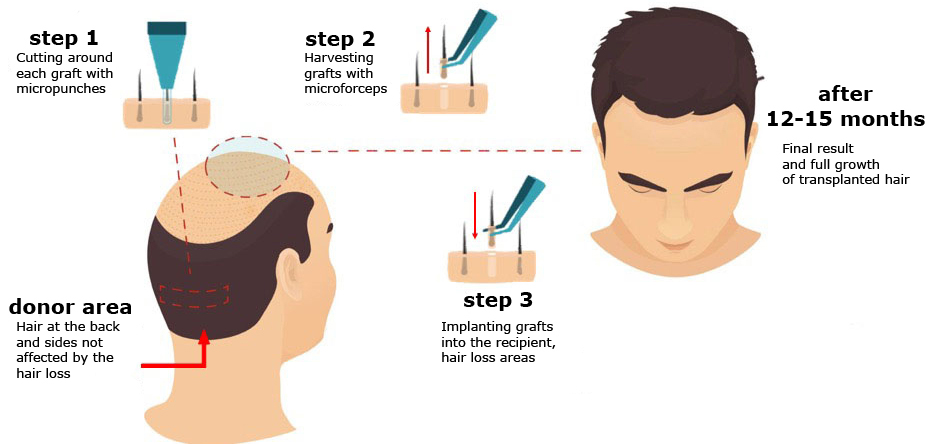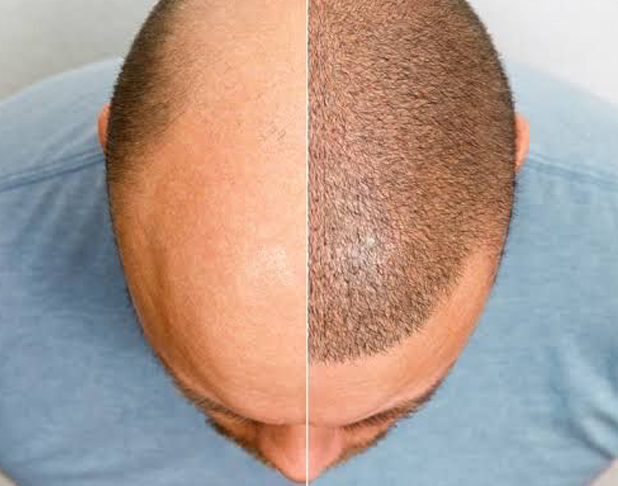
An increasing number of people are traveling across the world for hair transplants in Turkey to regrow their hair and rebuild their confidence and self-esteem. For many, this is the best way for them to regain a permanent natural head of hair.
Hair loss (alopecia), thinning, and balding can affect men and women of all ages. Hair loss can change a person's appearance, causing a lack of self-confidence, emotional suffering, personal, social, and work-related problems, depression, and anxiety.
Hair transplantation is beneficial for individuals experiencing hair loss or baldness. It is a viable option for those looking to restore a fuller and natural-looking head of hair. Even knowing there are solutions to restore lost hair and self-confidence can be life-changing.
**What causes male hair loss?** Up to 50% of males will experience a degree of hair loss by the time they reach their 50s. Disappearing hair can take on different forms, such as shedding, thinning, and bald patches. A steady decline in hair density can vary from person to person. Reasons for male hair loss include genetics, aging, hormone imbalance, high stress, inadequate diet, vitamin deficiency, and medication side effects.
**Symptoms of balding and hair loss include:**
- Receding hairline along the forehead: It is one of the first signs of male pattern baldness. A receding pattern of hair loss usually starts at either side of the forehead, creating a distinct M-shape in the hairline. As this pattern progresses, hair on the top or back of the head usually begins to fall out.
- Thinning hair on top of the head: The crown is the highest point on your scalp, toward the back of your head; another place where males can experience hair thinning. When hair thins over the crown, the scalp becomes visible, and eventually, a bald patch may appear.
- Excessive hair loss: Hair loss is spread evenly over the top of your scalp, so it becomes more visible. Common with aging, the thinning often begins at the hairline along the forehead.
- Circular patches of hair missing: Alopecia areata is immune system-related and causes patchy hair loss. This condition causes cells in your immune system to surround and attack your hair follicles.
- Patches of broken hairs: Resulting from extreme stress and shock, this is known as telogen effluvium and usually starts about three months after a traumatic experience.
Hair transplant surgery includes two popular methods: follicular unit extraction (FUE) and direct hair implantation (DHI). Both are effective for restoring hair for different types of hair loss problems. Recovery periods of both methods are similar, with patients experiencing the implanted hair falling out after 1 – 2 months but gradually growing back in 3–4 months. After 1-2 years, 100% new hair growth in the transplanted areas is expected.
**FUE hair transplantation:**
FUE stands for follicular unit extraction - each hair follicle is extracted from the donor area, typically the back of the head, and surgically moved individually by hand, one by one, to the treatment area, where they are surgically implanted by hand into the thinning or bald areas where they will be nourished and grow. The FUE hair transplant operation takes a day, roughly 6-8 hours, involving three phases: extraction, incision, and transplant. The FUE method requires total shaving of the hair and is mostly suggested for patients who will likely lose more hair in the future and patients younger than 35-40 years of age with wider bald areas.

**Advantages of FUE:**
- Minimally invasive
- No scalpels, staples, or sutures
- No incisions or linear scarring
- No downtime
- Fast recovery
- Immediate results.
- Gives a natural-looking appearance
- FUE treatment is pain-free
- Back to work in 1-2 days
- High rates of success
- Permanent hair restoration
**FUE for eyebrows & beards:**
FUE is not limited to the scalp; it can also be used for eyebrow and beard transplants, providing individuals with options for enhancing facial hair aesthetics.
**FUE for women:**
Baldness and hair loss are typically considered a man’s problem; however, hair loss can affect anyone, regardless of their gender. Unfortunately, more than 50% of females will experience significant and visible hair loss in their lifetime. Female hair loss takes on many forms like shedding, progressive thinning, and bald patches. The most common cause of hair loss is female pattern baldness (androgenetic alopecia). Other types of hair loss females experience include diffuse hair loss (chronic telogen effluvium), severe stress (telogen effluvium), alopecia areata, traction alopecia, and polycystic ovarian syndrome (PCOS). The extent of hair loss will vary from person to person, factors influencing female hair loss include hormonal imbalance, stress, diet, vitamin deficiency, genetics, medications, aging, and hairstyle. For female clients, the transplant procedure can be more time-intensive because women are less likely than men to allow the whole scalp to be shaved. Most women want to preserve their hair length and hide the location of the hair donor site (e.g., back or sides of the head). Clients will see noticeable results immediately, and in just five months, they experience visible hair growth - on average 50% hair growth. Within a year, most transplant recipients will experience up to 100% hair growth. An FUE transplant treatment is highly successful; it allows for the transplantation of individual follicles to restore a more voluminous and natural-looking head of hair.
**DHI hair transplantation:**
DHI stands for direct hair implantation method and is one of the latest minimally invasive hair transplant techniques. This method is a modification of the FUE hair transplant. Unlike traditional FUE techniques, which involve extraction and storage of hair follicles before implantation, DHI implants follicles directly from the donor area to the recipient area. This eliminates the need for a separate storage step, potentially improving graft survival and minimizing trauma. The DHI hair transplant method takes a day to complete, approximately 6-8 hours with local anesthesia, with a success rate of 90-95%. Suitable patients for the DHI method include those with early to moderate hair loss seeking natural-looking results, those with thin hair where traditional FUE might not be ideal, individuals concerned about minimizing scarring and downtime, and those over 35 years of age with limited hair loss rather than a complete loss of a specific area. The DHI method does not require total shaving of the hair; only the donor site is shaved. This technique is ideal for eyebrows, beards, sideburns, and small bald areas.
**Advantages of DHI:**
- Minimal surgical skin trauma during hair transplantation
- No visible scarring and natural-looking hair growth
- Reduced hair follicle friction with implantation
- Faster rate of scalp healing and hair transplant recovery post-surgery
- Micro Sapphire method better at increasing hair density
- Boosts an already high success rate for hair transplant outcomes
- Possibility of performing without having to shave the head

